Smaller national kids’ broadcasters: Sony/Zee, BBC and ETV
Sony: Animax then, Sony YAY! now (though Animax has returned somewhat)
In contrast to Japanese children’s cartoons like Doraemon and Shinchan, anime content has always been targeted towards more mature audiences in their teens and twenties instead of kids, and India has had a passionate otaku fanbase for decades now. Animax, Sony’s channel dedicated to Japanese anime, was launched in India in July 2004 — the same year as Pogo, launched at the start of the year, and Disney Channel, Hungama and Jetix/Toon Disney (now Super Hungama) at the end. Initially in both Hindi and English audio feeds before the former was scrapped in 2006, Animax was the only Indian channel to simulcast anime on the same day as the original in Japan, with well-known shows including Naruto, Inuyasha and Fullmetal Alchemist. For most of its existence on traditional TV platforms, it operated with the content of the Southeast Asian feed instead of having a dedicated Indian feed.
It came as a body blow to the Indian otaku community in April 2017 when Sony Pictures Networks decided that it would down the shutters on Animax — at least in its traditional TV form — and replace it with a new children’s channel called Sony YAY!, which is no different from most other kids’ channels, except Cartoon Network and Nick HD+, with predominantly Indian productions. To sweeten the pill, Animax continued to be available on the SonyLIV app as a paid live-stream in order to cater to the niche anime fanbase in India, but even that stopped in May 2020 when several of Sony’s Southeast Asian TV channels — Animax, AXN, GEM (for Japanese dramas) and ONE (for Korean dramas) — were sold to a new company called KC Global Media. To aggravate the matter, the then-Turner India had pulled the plug on its Toonami channel in May 2018, further leaving Indian anime-lovers disheartened.
However, in January 2023, KC Global Media decided to reintroduce Animax in India exclusively on the JioTV platform and JioFiber set-top boxes, gladdening the hearts of Indian otakus. However it is a pure Japanese feed without subtitles, and despite efforts from KC Global Media, JioTV has not added subtitles. On the contrary, Sony continues to move in the opposite direction: towards the masses, and away from the anime fandom. Sony YAY! is the current home of the popular French animation series Oggy and the Cockroaches, which has aired on Cartoon Network and Nick in the past. It also has several Indian productions like Taarak Mehta Kka Chhota Chashmah (spelled with two Ks) — the animated version of Sony Sab’s long-running sitcom Taarak Mehta Ka Ooltah Chashmah — plus Honey Bunny Reloaded, Kikoumba, Rabbit Aur Bhalla and others, in addition to the Japanese show Robotan.
It may also be noted that, since Sony has been in the process of merging with Zee for quite some time, the latter used to operate a children’s channel called ZeeQ that was launched in November 2012 and branded as ‘India’s first edutainment channel’. In addition to the typical cartoon shows, it positioned itself as targeting smart, intelligent kids with a scientific appetite, and had several educational shows of this sort. It aired a number of cartoon shows, both Western and Indian, including Bandbudh Aur Budbak that later shifted to Discovery Kids. However, on 1 February 2017, Zee decided to discontinue ZeeQ, the same day that the TeenNick block on Nick Jr. was also scrapped in favour of a 24-hour Nick Jr. channel. Its shows continue to be available on Zee’s rerun Hindi channel Big Magic, along with several Bengali cartoons, as below.
Bengali cartoons on Sony Aath and Zee Bangla, sometimes aired on Hindi channels
Though this concerns only one regional language, it is nevertheless useful to know that merger partners Sony and Zee have long been producing cartoon shows for their Bengali channels — Sony Aath and Zee Bangla — and some are also often aired on their rural-focused Hindi entertainment channels: Sony Pal and Big Magic, respectively. Therefore these have also been included along with the other channels, and, along with the independent kids’ channel Rongeen TV (discussed later), they have filled the deficit in Bengali kids’ shows, in a major language often ignored by national kids’ channels.
Animation is one of the two key components of the programming strategy of Sony Aath, the other being dubbed Hindi series from Sony TV and Sony Sab — especially crime and drama shows like CID and Adaalat, besides others like Vighnaharta Ganesh and Baal Veer — as it does not follow the typical original serials-driven schedule of Star Jalsha, Zee Bangla, Sun Bangla, Colors Bangla, etc. This is in stark contrast to Sony Marathi — Culver Max Entertainment’s only other regional-language channel before the Zee merger — which is a typical Marathi GEC that competes with Star Pravah, Zee Marathi, Sun Marathi and the like. Sony Aath has a large number of original Bengali cartoons like Gopal Bhar, Nix, Nut Boltu, Panchatantrer Mantra and Gultemama, of which Gopal Bhar is dubbed in Hindi and shown on Sony Pal on Sunday mornings.
Meanwhile, Zee Bangla too has a couple of animation shows, which are also aired on Hindi sister channel Big Magic. Two of the longest-running are Bantul The Great — based on a comic strip by renowned Bengali cartoonist Narayan Debnath, who passed away in January 2022 at the age of 96 — and Chander Buri O Magicman, and these have been a Sunday-morning staple for years. Indeed, Big Magic (which is available on DD Free Dish, unlike Zee Anmol, Sony Pal, etc.) has a much larger children’s lineup during morning hours, also consisting of former ZeeQ shows like Bandbudh Aur Budbak, Danger Mouse, Pyaar Mohabbat Happy Lucky and Magic Bhootu — the last being an animated version of the Zee Bangla serial Bhootu, which was later remade in Hindi on Zee TV. However, given that Big Magic is one of three Zee channels that will be sold after the merger (along with the Hindi movie channels Zee Classic and Zee Action) due to several overlapping genres among channels, only time will tell if this will last.
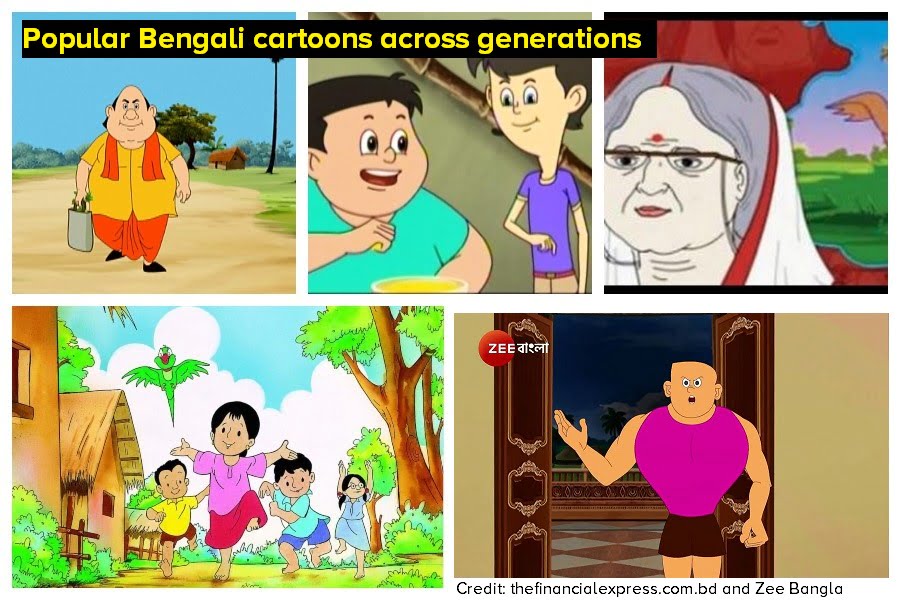
BBC’s CBeebies for preschoolers: relaunched in 2020 after eight years
An interesting presence among Indian kids’ channels, especially for preschoolers, is the BBC’s CBeebies channel, which is the British public broadcaster’s only channel in India other than the global news channel BBC News (known as BBC World News until April 2023). For the record, CBeebies had originally been launched in India in May 2007, but was discontinued in November 2012 — coincidentially the same month that ZeeQ and Nick Jr./TeenNick were launched — along with English entertainment channel BBC Entertainment, which has not returned to Indian shores. Several other English GECs in the early 2010s like ITV Granada, Big CBS Prime/Spark/Love and Big RTL Thrill have also failed before.
However, at the beginning of the pandemic in April 2020, BBC Studios (BBC’s global division) had a change of heart and relaunched CBeebies in India, with a slew of cable and DTH operators adding the preschoolers’ channel. Some of CBeebies’ programming for tiny tots includes Hey Duggee, Go Jetters, Yakka Dee and Sarah & Duck, in addition to the well-known Teletubbies and Thomas & Friends, which have been around for decades. Now that BabyTV HD by Disney Star is finally gone for good, this is the only foreign-run channel for kids under the age of 6, as Da Vinci Learning HD had also left the country in 2017.
ETV Bal Bharat: a new player with a pan-Indian perspective
Launched in April 2021, at the height of the devastating second wave of the COVID-19 pandemic, the ETV Bal Bharat channels marked the return of the Hyderabad-based ETV Network to non-Telugu languages, years after its non-Telugu ETV-branded entertainment channels in various languages were sold to Reliance and adopted the Colors brand used by Viacom18. Uniquely for kids’ channels, not only is ETV Bal Bharat available in a whopping 12 audio feeds — including in HD — but there were initially even dedicated SD channels in all of these languages, for a grand total of 14 ETV Bal Bharat channels at the outset. ETV’s commitment to regional languages was exceptional, as it went beyond the typical Telugu and Tamil and ventured into languages like Punjabi, Assamese and Odia, which are never considered on par with major regional languages like Kannada, Marathi and Bengali by national networks.
This was fine in theory, but ETV’s distribution issues meant that the SD feed of ETV Bal Bharat was the only one to actually be added on DTH platforms, as neither the HD channel nor any of the language channels were ever added. A number of ETV channels in the past have failed to be distributed on any TV platforms apart from a few cable operators in Telangana and Andhra Pradesh, and some, like ETV Life HD and ETV Abhiruchi HD, have been axed. Similarly, the non-South Indian ETV Bal Bharat channels in 7 languages (Hindi, Bengali, Marathi, Gujarati, Punjabi, Assamese, Odia) were closed after nearly a year, leaving the main ETV Bal Bharat SD and HD channels and the English and four South Indian (Telugu, Tamil, Kannada, Malayalam) channels. Thankfully, however, all 12 audio feeds continue to be available on the main ETV Bal Bharat SD and HD channels, so nothing has changed in that regard.
As far as content is concerned, ETV Bal Bharat has impressively been far more geared towards Western animated shows — plus many movies — though it also has several Indian productions. Some of the foreign cartoons aired on the ETV Bal Bharat channels include Baby Shark’s Big Show, Dennis & Gnasher Unleashed, Angry Birds, Everything’s Rosie and many more, in addition to several Nickelodeon series like SpongeBob SquarePants, Winx Club (several of whose movies have also been aired on the channel) and Dora The Explorer. Meanwhile, Indian animation shows include Abhimanyu: The Last Yodha, Pandeyji Pehelwan and Bal Bahubali. One can only hope that ETV Bal Bharat HD is added on DTH platforms in the coming years to pose a stiff challenge to the Nicks and Cartoon Networks of the genre, and differentiate it from Pogo, Sony YAY! and Discovery Kids, which have no HD feed planned.
Some more noteworthy children’s channels like those from the Sun network are dealt with on the last page, as well as a few educational channels.

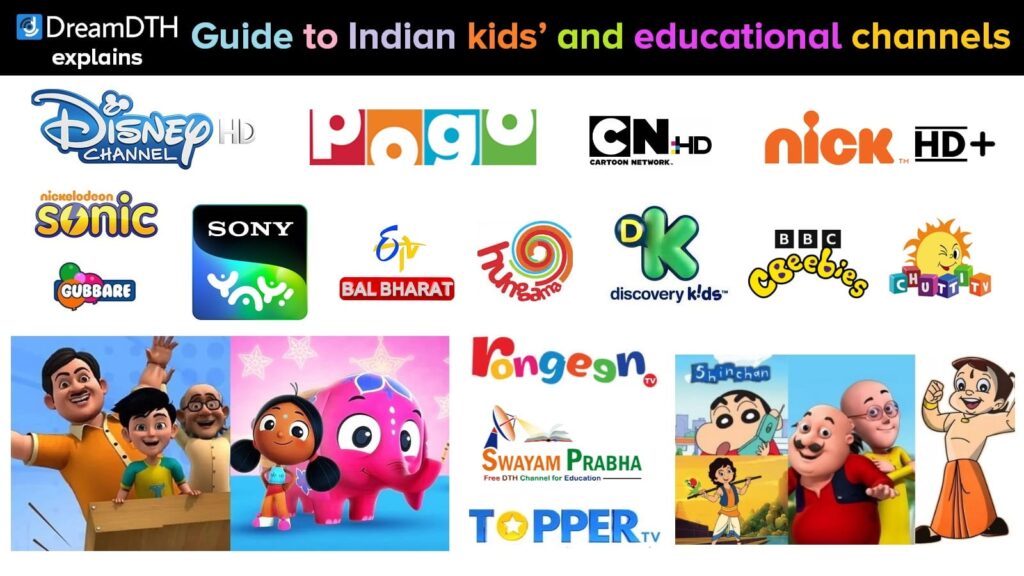

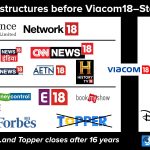
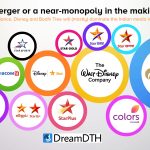


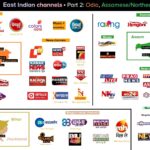

5 replies
Loading new replies...
Join the full discussion at the DreamDTH Forums →